Pregnancy and birth are significant life moments to go through – they’re emotional, rewarding and life-changing experiences. It’s also an incredible amount of strain and change for your body to go through. Over 9 months, your body changes and transforms in the most wonderful way to create a safe haven for your unborn baby.
In-between adapting to a whole new lifestyle, you have a new body taking shape in the next step in your journey as a mother. Our bodies are fragile after giving birth and need support and recovery.
Yoga can help us prepare for any big change in our lives - helping align our minds and hearts to know what to do when challenges arise. Taking a few minutes throughout the day to find your center, take some breaths, and stretch can be a powerful practice. Try to do what you can to take care of yourself on a daily basis. Making time for your health and wellbeing will equip you with the best possible body and mindset to take on parent duties.
Whether you’re looking to work on your body from a physical standpoint, perhaps you want to help support your body’s recovery or you simply want to take time out and feel good in your skin – try this gentle postnatal yoga guide to start things off.
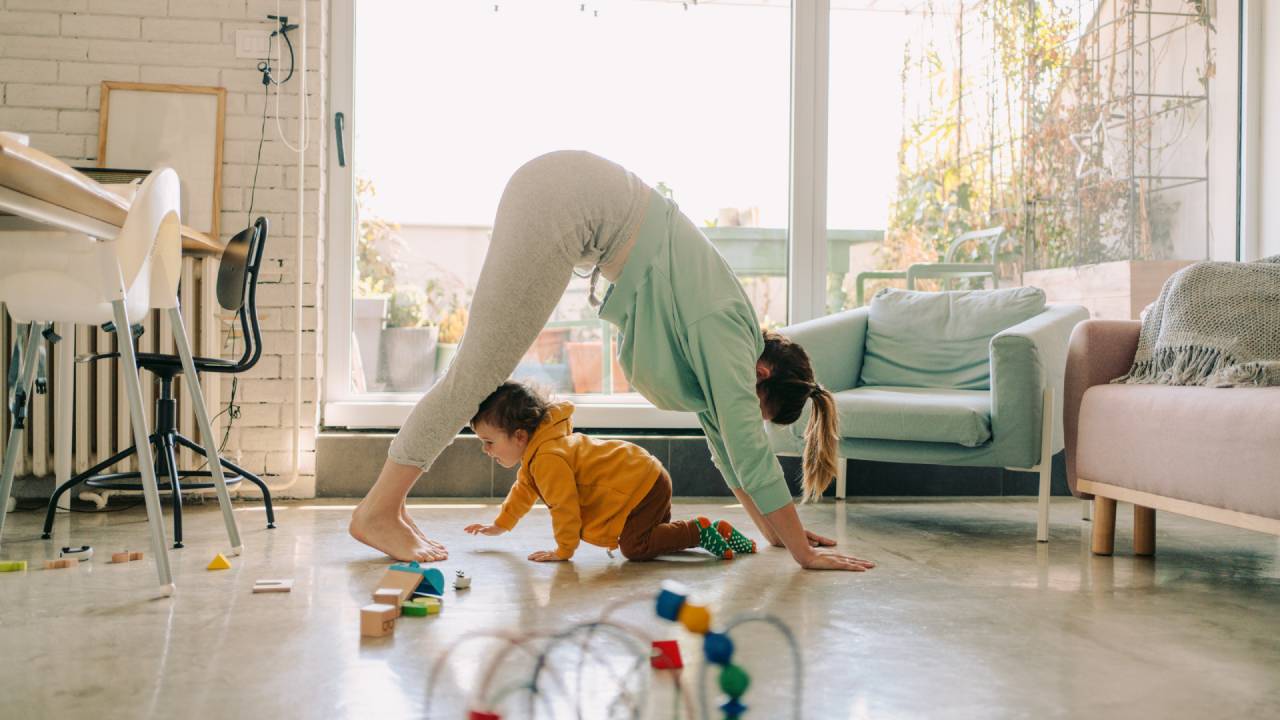
Postnatal Yoga for New Mothers – The Benefits
-
Healing: If you are suffering from pelvic floor pain, incontinence, back pain, or other complications – a gentle yoga flow will allow you to slowly strengthen your body and help yourself heal.
-
Injury Prevention: Weakness in your core and pelvic floor after childbirth is very common. Postnatal yoga is soft enough so you can ease back into exercise while starting to strengthen your core and pelvic muscles.
-
Energy Boosting: Taking a moment to relax and focus on your breath can give you that much-needed energy boost. As we breathe, we not only take in air but life. A gentle yoga sequence and a few deep breaths will lift your energy and circulate fresh oxygen around your blood, boosting your mood and your energy.
-
Acknowledgment of your Body’s Strength: Yoga helps to keep us present in all aspects of our being; our mind, body, emotions, and inner self. Think of it as creating a foundation of peace and calm to our day.
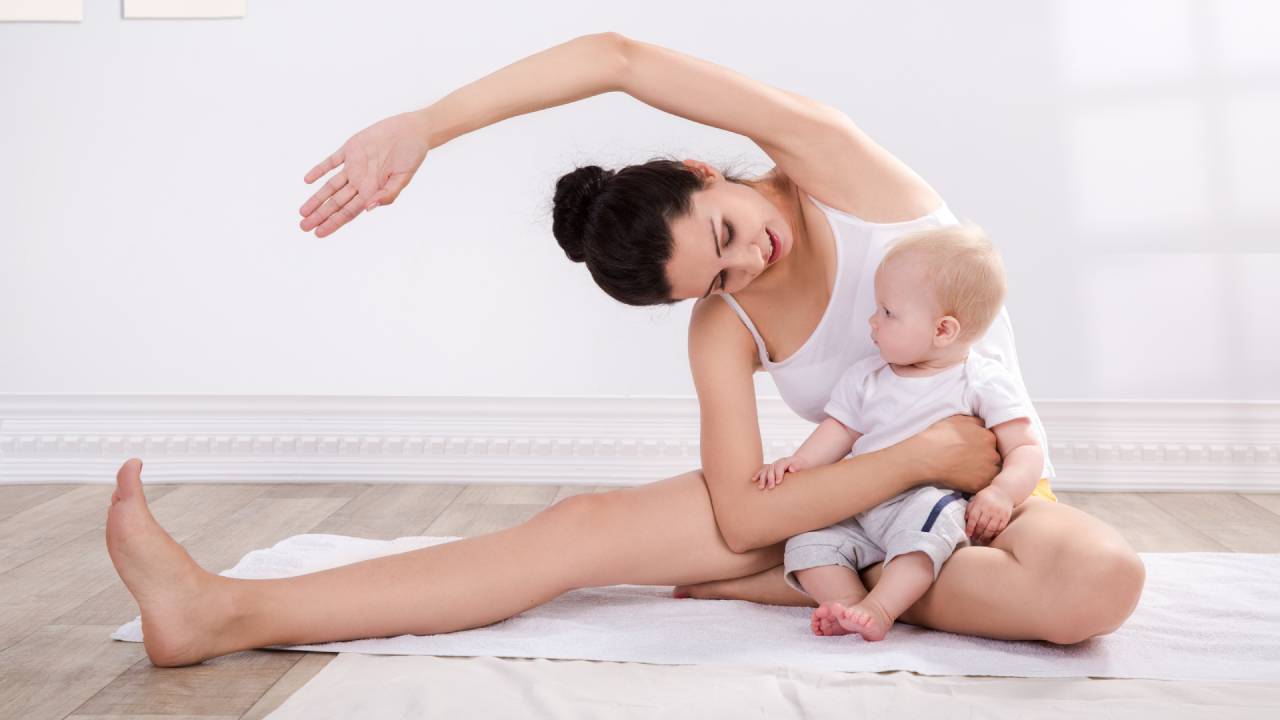
Yoga Poses to avoid after Pregnancy
When it comes to practicing postnatal yoga - try to avoid poses and movements that generate any heavy abdominal pressure or that stretch your abdomen too much, such as intense backward bends.
When you do yoga poses, make sure to hold your core muscles tight and do not overextend your stomach. The focus is to not overstretch, but gently build back up your core and abdomen strength.
Here are our top tips when it comes to exercising post-pregnancy:
- Refrain from overextension of the spine: A large part of postnatal recovery is slowly recovering muscle tone and gaining stability by strengthening the back. Bad posture is common due to pregnancy and breastfeeding, and our bodies, in general, can feel weakened and need tightening. Consistently moving our bodies helps with smooth joints and flexibility.
- Be cautious with abdominal exercises: Sit-ups can be very beneficial but proper form is very important. It’s common in pregnancy for caesarean section and low back strain can take some time to recover.
- Avoid squats and squat variations: Childbirth and postpartum are key moments that require a large demand from our pelvic floor muscles. The effort we exert during labor can be long and very uncomfortable. Your pelvic floor will need to regain its strength.
- Deep back bending: During pregnancy, our abdominal muscles slightly separate to make way for the baby. Deep backbends can sometimes exacerbate the separation, so try to be careful.
- Be careful when including twists: Any twist where you are turning your upper body or compressing your stomach past the point of comfort, is not advisable.
Postnatal yoga with baby
This safe and simple yoga flow for postnatal mothers can help target weight loss, calm your mind and best of all, it is a yoga sequence that can easily be done with baby in tow.
Cat-Cow Pose (Bitilasana)
Cat-cow is a soft and gentle movement that helps strengthen your abdominals and lower back, as well as carefully stretching the spine.
- Bring yourself on all fours with your hands stacked underneath your shoulders.
- Push your weight into your hands to maintain a strong position.
- Bring your shoulders away from your ears and press the tops of your feet into the mat
- As you inhale, drop your belly, pushing your chest forwards. At the same time, tuck your tailbone under, lift your head and look slightly up.
- As you exhale, now untuck your tailbone, rounding up through the spine and gently tuck your chin in towards your chest.
Warrior Pose 1 (Virabhadrasana)
This first pose of the Warrior sequence is a great relief for stiffness in the neck, shoulders and back.
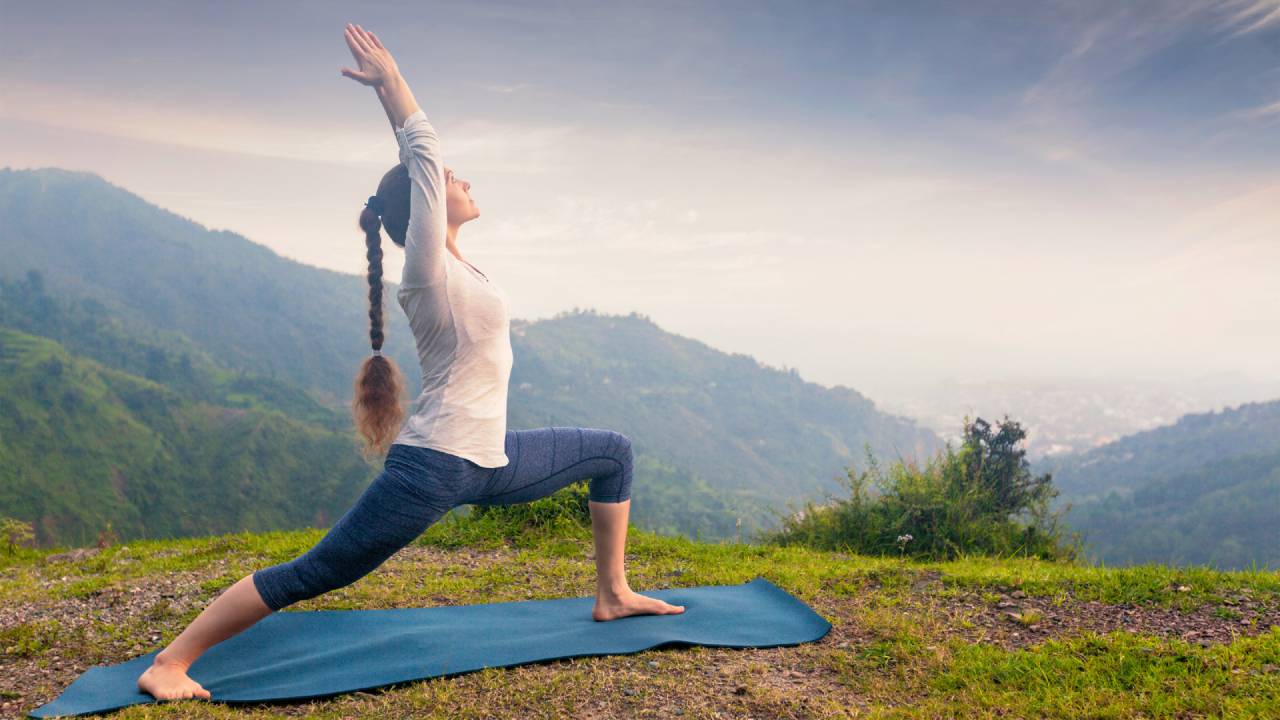
- Stand by placing your feet a little wider than hip-width apart.
- Turn one foot outwards, while slightly turning the left foot inwards.
- Raise your hands to shoulder level, parallel with the floor.
- Bend your back knee and extend your leg behind you, similar to a high lunge.
- Look straight ahead.
- Repeat with the other foot.
Reverse Warrior (Viparita Virabhadrasana)
Think of this as a side bend done in a lunge position. It’s great for strengthening the legs, opening your sides, and improving spinal mobility and balance.
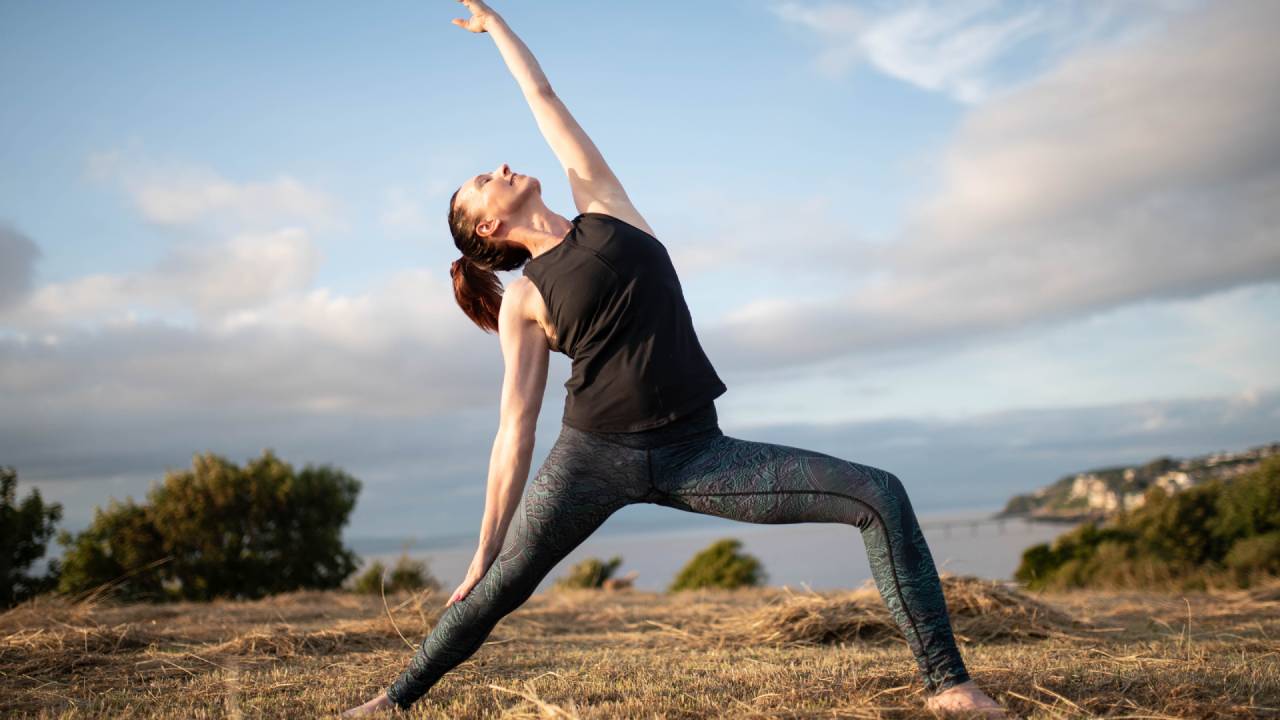
- Start in Warrior position. Bring your hand down to rest on your back leg. Bring your front arm up towards the ceiling.
- Bring your gaze up to your front fingertips.
- Keep the front knee bent, pressing your feet into the ground. Sink the hips toward the floor and relax the shoulders.
Triangle Pose (Trikonasana)
A sumptuous pose to help stabilize both physical and mental balance. Especially helpful as your baby grows and your center of gravity starts to shift.
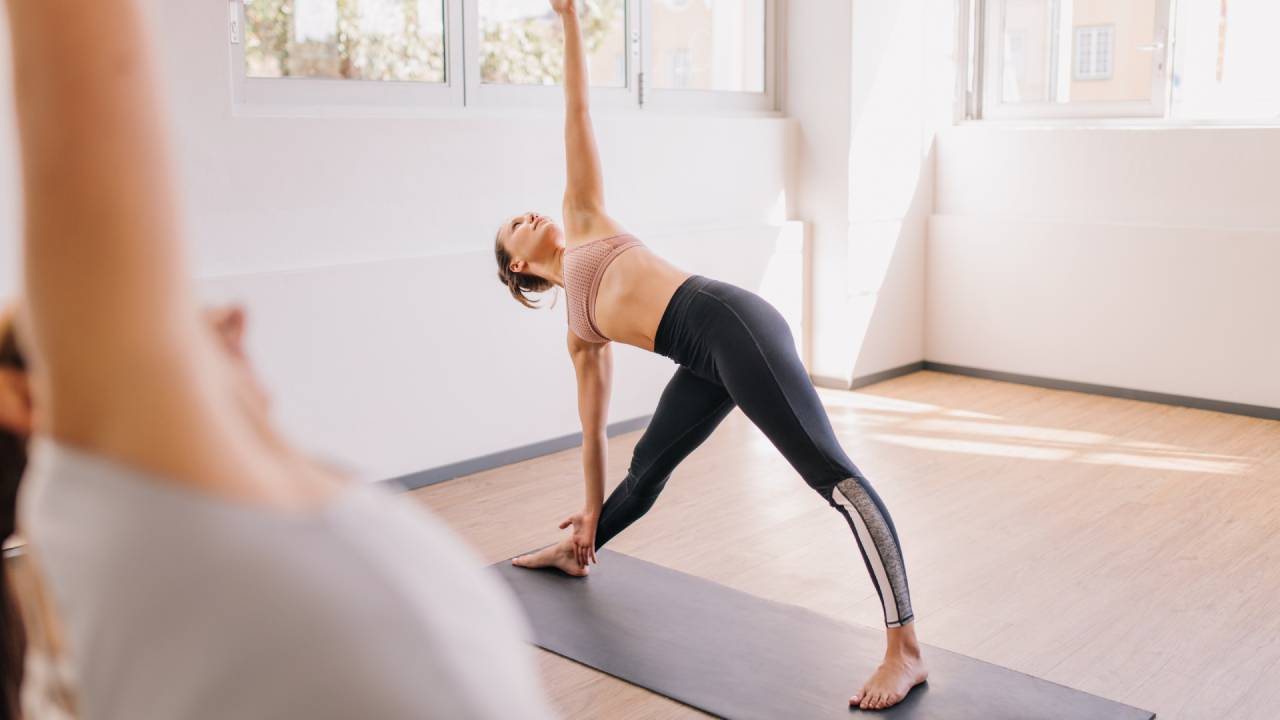
- Stand with your feet apart, a little wider than hip-distance.
- Raise your arms on either side, keeping them parallel to the ground.
- Bend sideways to one side, reaching and touching your foot with your hand, raising the other arm upwards.
- Repeat with the other slide
Bridge Pose (Setu Bandha Sarvangasana)
A great strengthening pose for your legs and abdominals, as well as an effective solution to combat anxiety and an overactive mind.
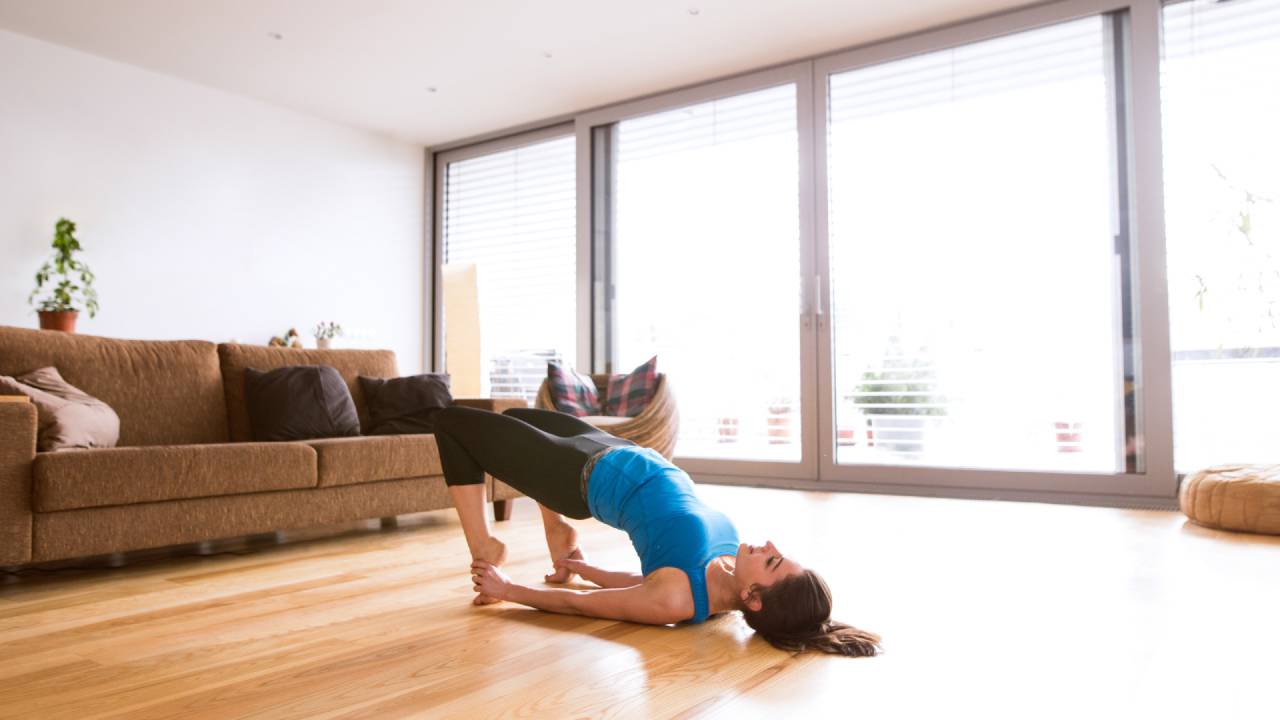
- Lie flat on the floor, knees bent with your feet on the floor, heels as close to your glutes as possible.
- Press your feet into the floor and push your tailbone upward toward the sky, squeezing your glutes and lifting them off the floor. Keep your thighs and feet parallel. Clasp the hands together below your hips and hold them in place.
- Lift your chin slightly away so it’s not resting on your chest.
- This is a perfect pose to hold the baby in place on your lap too, if needed.
Child’s pose (Balasana)
A wonderful resting posture that gently stretches various parts of your body.
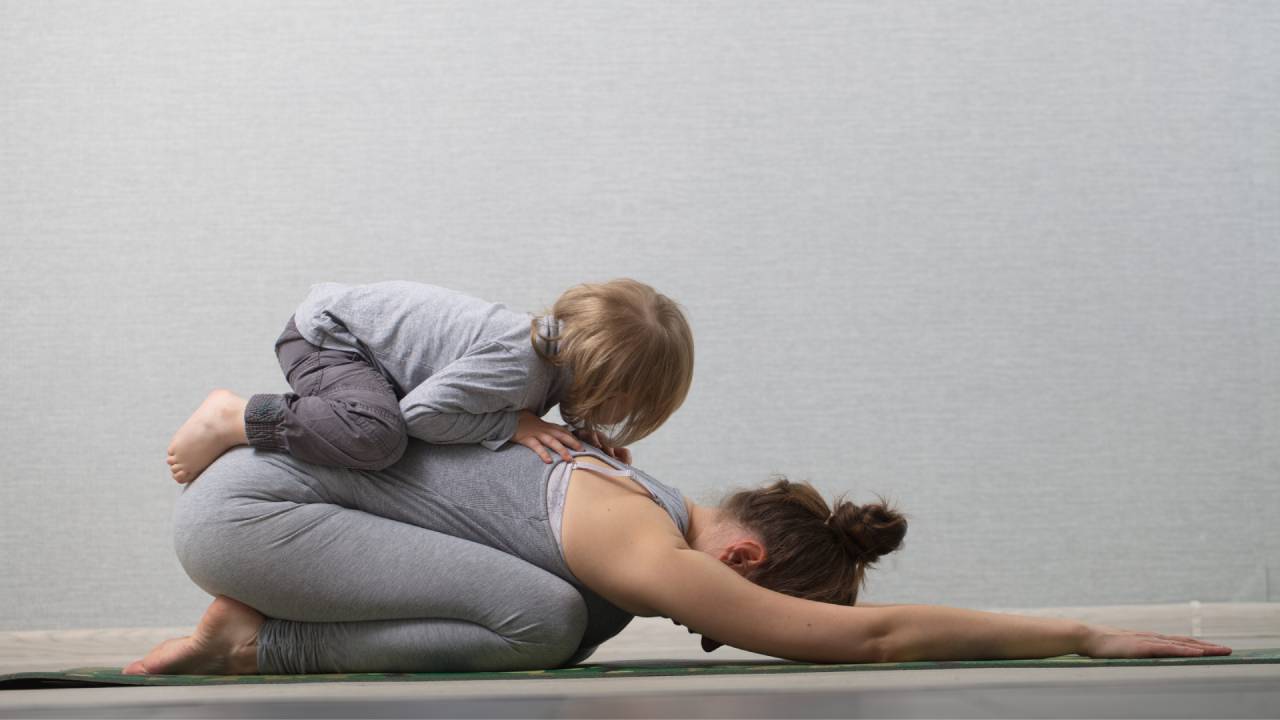
- Start with your hands and knees on your mat.
- Take your knees as wide as your mat, keeping the tops of your feet flat on the floor with your big toes touching.
- Bring your stomach to rest between your thighs and your forehead to the floor.
- Stretch your arms in front of you with your palms on the floor.
Legs Up the Wall (Viparita Karani)
*This is an easy pose to hold and serves as a great restorative and rejuvenating pose. A lovely stretch to finish your flow with.
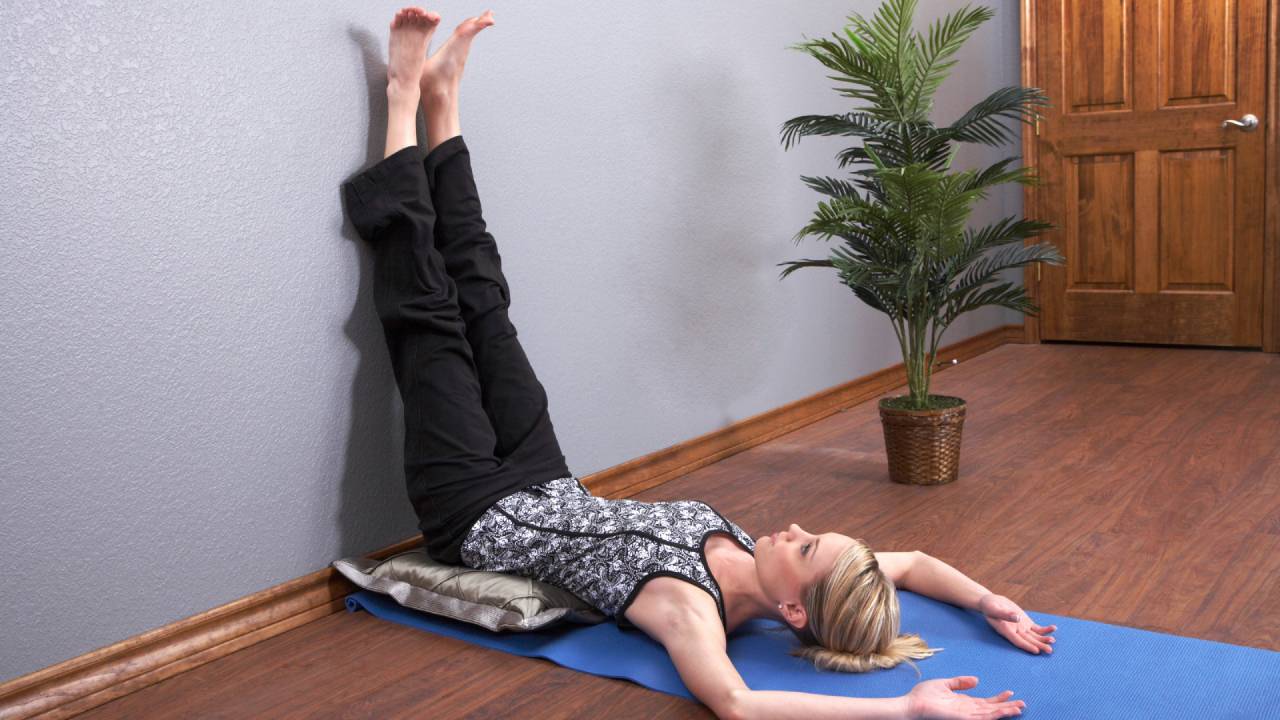
- Lie down on your back with your glutes and legs raised against the wall.
- You can have your legs in a V-shape or bring your legs together in a straight line. Try to keep your glutes and legs connected to the wall.
- Place your arms by the side of your body
- Close your eyes and allow your entire body to relax and settle.
- Once you are ready to exit the pose, bend your knees to your chest and carefully roll onto your side.
Postnatal Yoga Classes: What to Expect
A postnatal yoga class is designed to support the healing of your body after the intense experience of pregnancy and labor. Think of postnatal yoga as a way of helping you work your way back to restoring your body.
There are different styles of yoga that can be adapted for postnatal mothers, including Bikram and Kundalini. In a postnatal yoga class, your teacher has extensive knowledge of the human body and what it goes through during pregnancy and labor. Postnatal yoga classes are designed to help repair your muscles and tissues, starting with your core, pelvic floor and nurturing beyond.
A postnatal yoga class addresses the mental and emotional aspects of giving birth, and the powerful first moments as a mother as you bond with your new baby. There is a wealth of new thoughts and emotions to explore and work through.
Dedicated classes can help you on your journey to feel like yourself again. The mindfulness of postnatal yoga will help you feel grounded as a new parent and start the process of strengthening your body, tummy, muscles, and more.
Whatever your goal, you may find it beneficial to attend a dedicated yoga class for postnatal women, whether it be online or in-person.
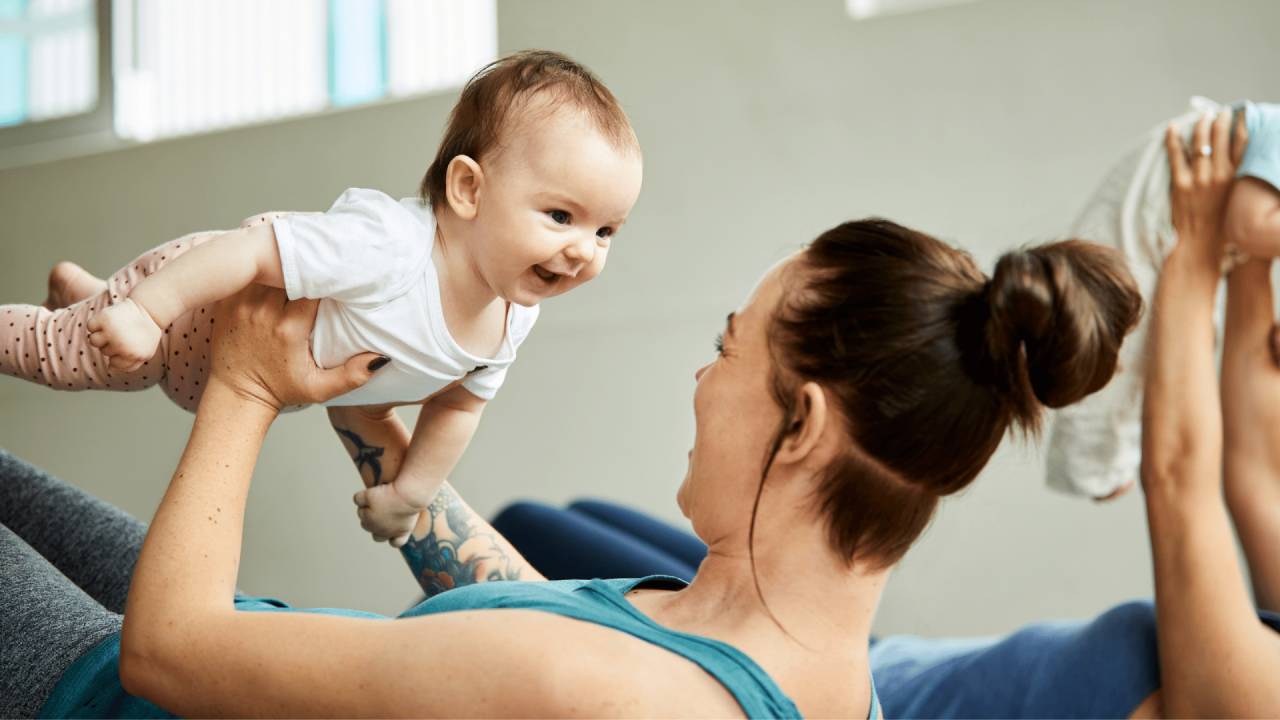
Practice Yoga Safely with Expert Guides
The physical and emotional experience of giving birth requires a period of recovery. Although you may not get a great deal of rest, now you have a newborn to look after – your rehabilitation is very important, and yoga can provide significant benefits to support it.
Think of postnatal yoga as addressing the physical, mental, and emotional challenges of being a new mother, as well as the aftermath of pregnancy and giving birth.
VIVAYA offers live-streamed classes, personalized, one-on-one sessions for all abilities, including specialized workshops that can support your health, wellbeing, and nutrition both during and post-pregnancy. Whether you’re just starting your wellness journey or looking to take your practice to the next level, VIVAYA has an online sanctuary of classes and community waiting for you.
Check out our schedule of live, online Yoga classes here
With dedicated teachers specializing in prenatal and postnatal yoga, you will receive carefully guided classes, allowing you to go at your own pace. All VIVAYA yoga & meditation instructors are experts in their depth of knowledge, compassion and patience, and intuitive dedication to working with you on your individual journey.
Try 14 days of FREE, unlimited yoga & wellness classes, and experience a new, welcoming online community.
